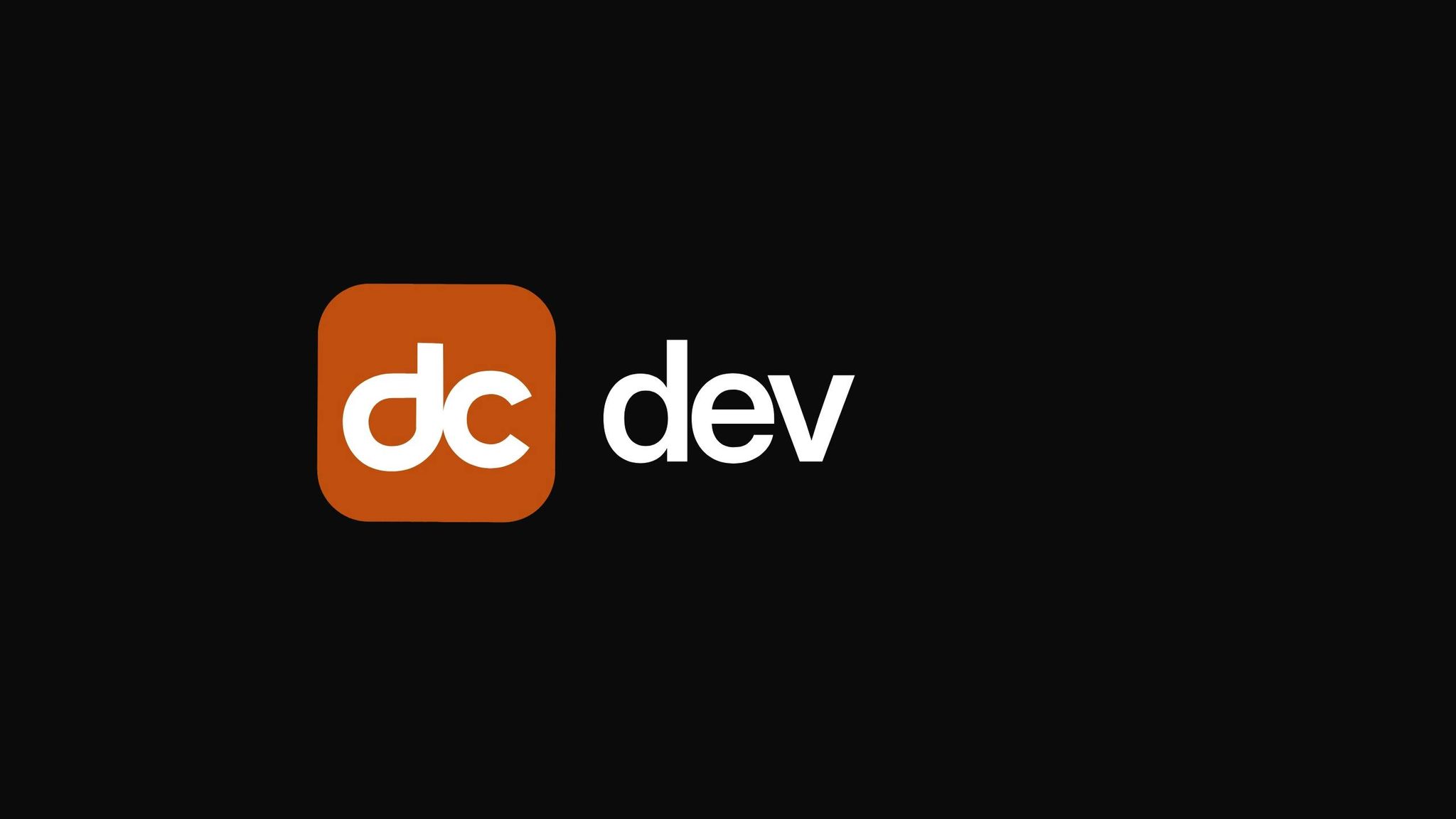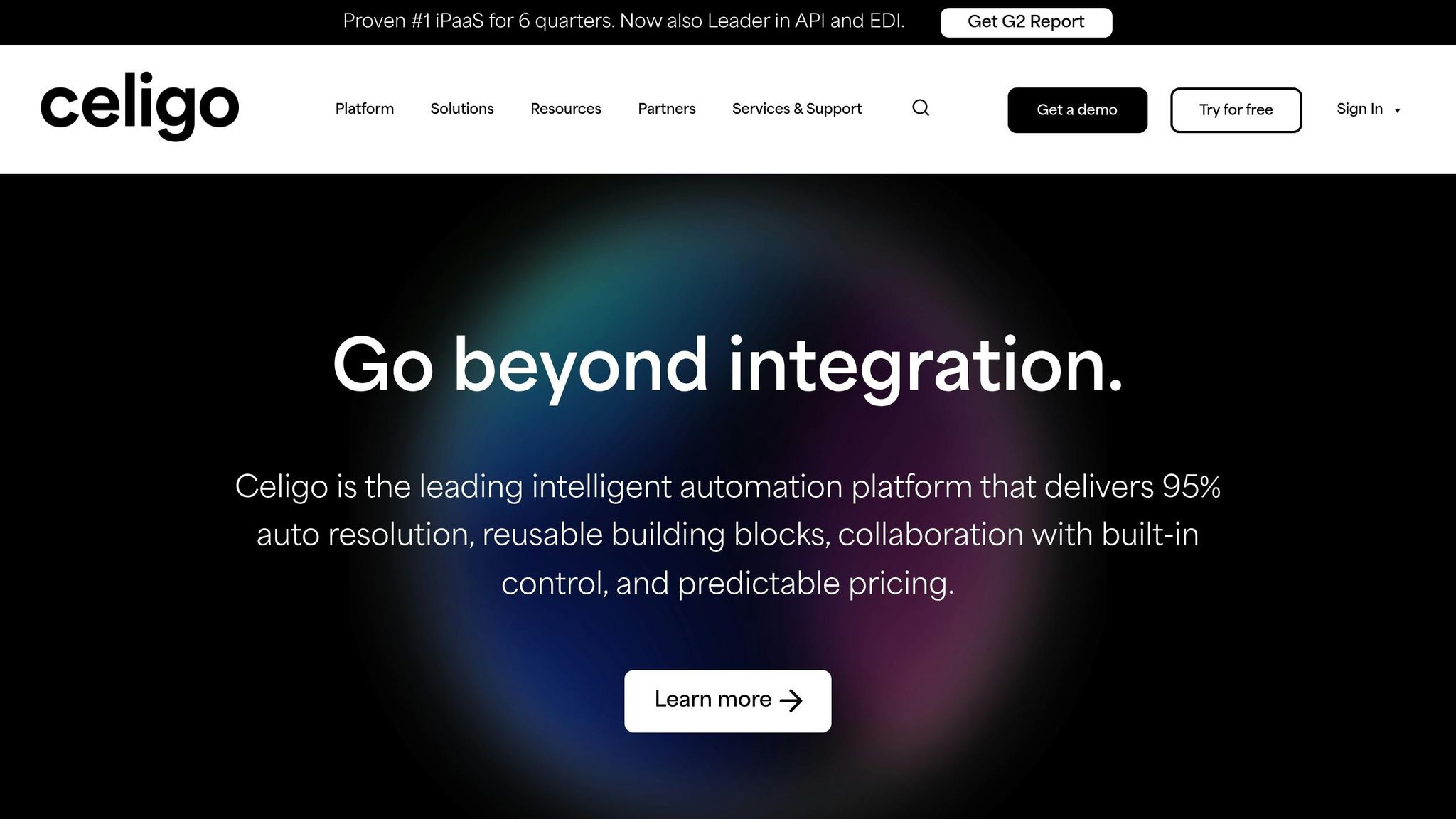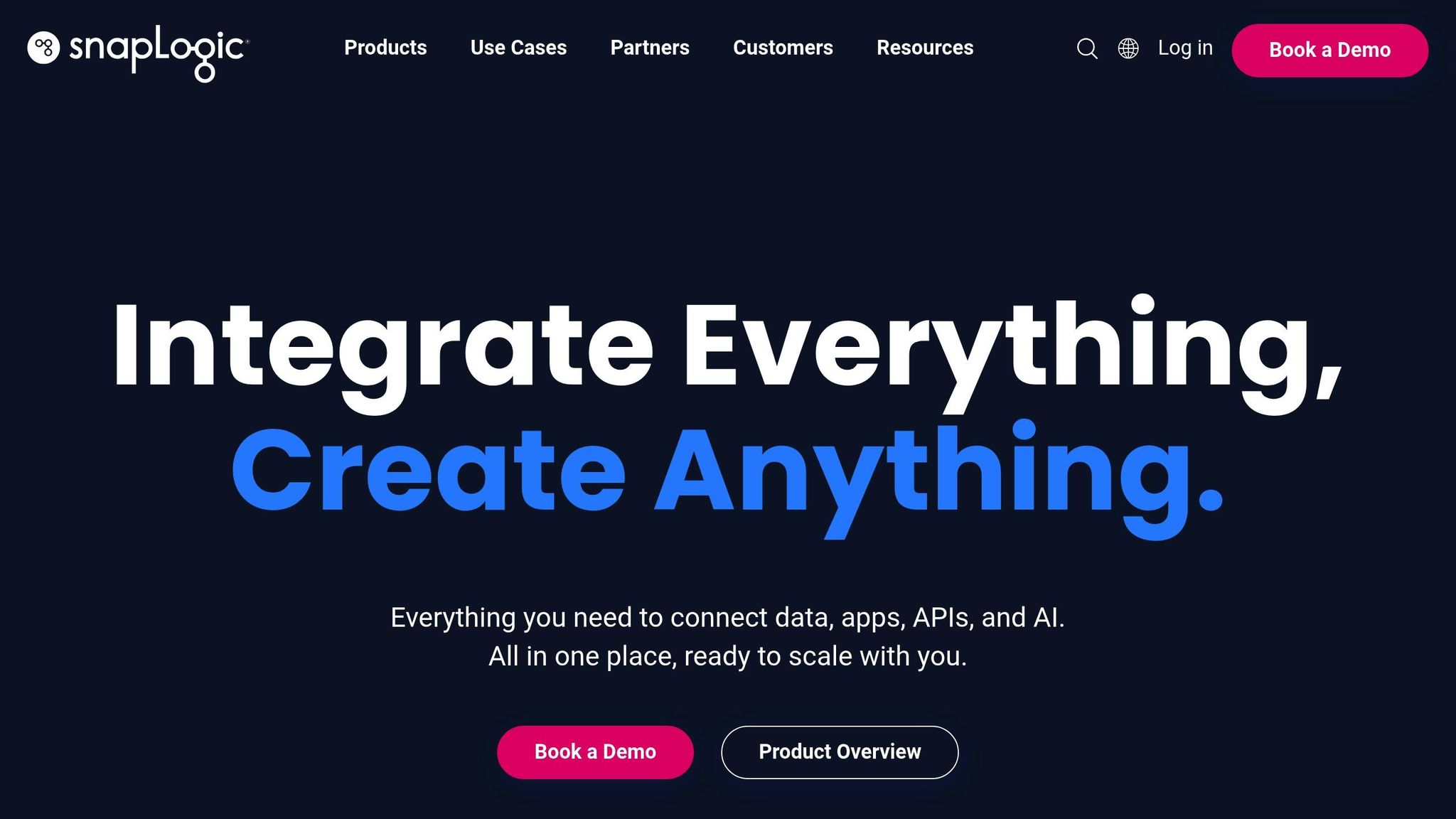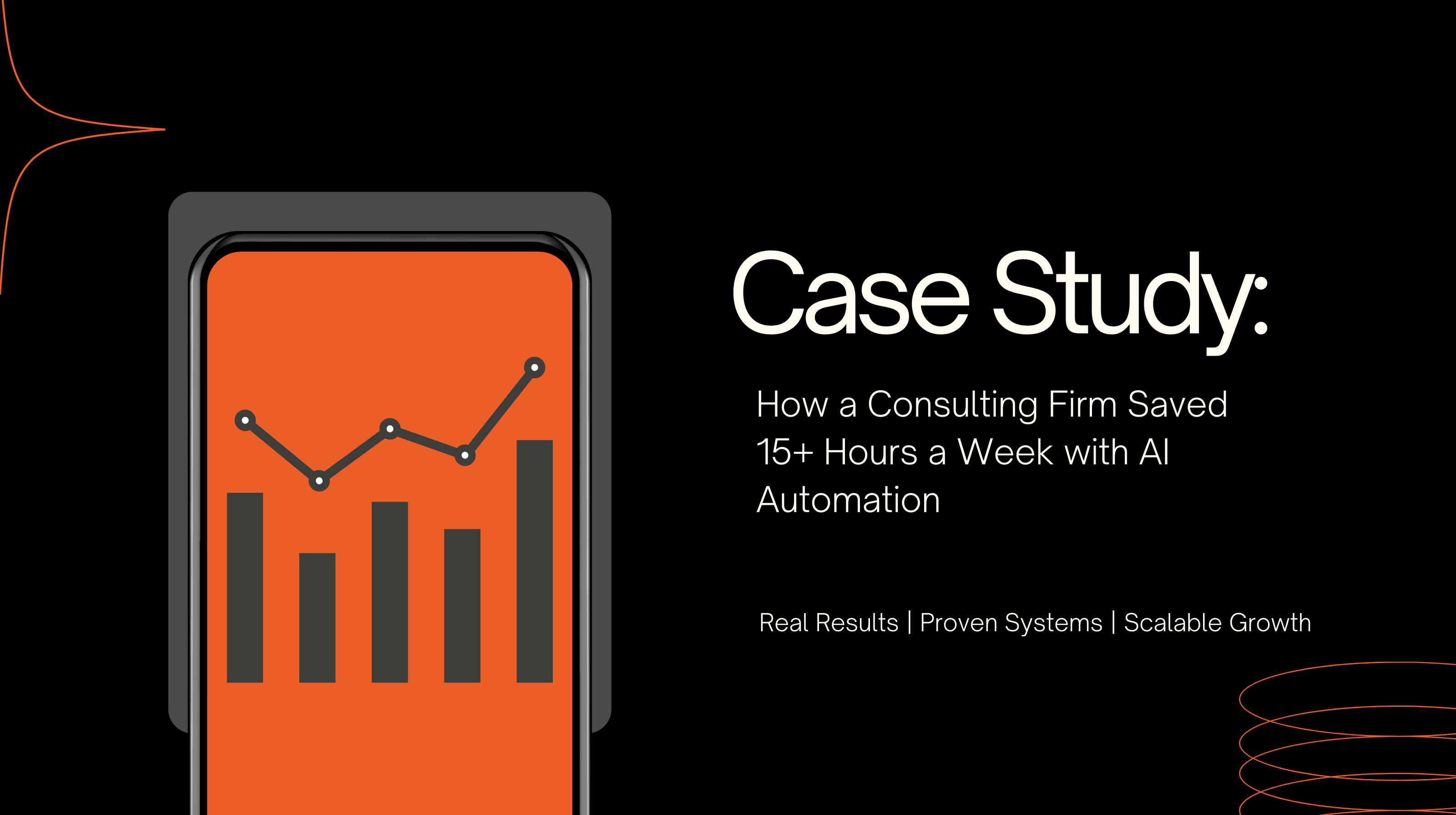Mid-size businesses need AI platforms that simplify processes, integrate with existing systems, and scale as they grow. This article reviews four platforms tailored for these firms: Devcore, Celigo, SnapLogic, and TIBCO Cloud Integration. Each platform offers unique strengths, from automation to scalability, but choosing the right one depends on your specific needs and budget.
Quick Comparison:
Each platform has strengths and trade-offs, so consider your firm's goals, budget, and technical expertise before deciding.
9 Best AI Automation Tools in 2025 (In-Depth Comparison)
1. Devcore

Devcore is an AI integration platform specifically designed to simplify operations for mid-size businesses. With its proprietary Leverage Blueprint™, it identifies operational bottlenecks and develops tailored AI solutions. Let’s break down its key features.
Automation Capabilities
Devcore brings automation to a wide range of business functions, making it a go-to solution for mid-size companies with varied operational demands. It handles tasks like updating CRMs, responding to emails, summarizing calls, entering data, and researching leads - all areas that often slow down workflows.
But it doesn’t stop at basic automation. Devcore also offers advanced AI-powered tools, such as market research agents, prospect-matching systems, and AI-driven content generators for personalized email campaigns. These tools help businesses sharpen their competitive edge without needing a deep bench of in-house AI experts.
A standout feature of Devcore is its focus on technical development. The platform provides API integrations, custom dashboards, and workflow optimization tools that connect seamlessly with existing systems. This eliminates the hassle of juggling multiple vendors and ensures smooth operational integration.
Scalability
Devcore is built to grow with your business. Its cloud-based infrastructure lets you scale resources as needed, providing the flexibility to handle increasing workloads. Thanks to its modular design, companies can start small - focusing on specific automation projects - and gradually expand as their needs evolve. This approach helps avoid overspending on unnecessary features.
For businesses with distributed teams, Devcore supports remote access to automated workflows and AI tools, making collaboration easier and more efficient. Its scalable design aligns perfectly with its integration-first philosophy.
Integration Ease
One of Devcore’s biggest strengths is how effortlessly it integrates with existing systems. Whether it’s a CRM, email platform, or other business application, Devcore connects without requiring major technical overhauls.
The Leverage Blueprint™ process begins with an in-depth audit of your current systems to pinpoint the most impactful integration opportunities. This ensures a smooth transition that frees up IT resources for other priorities.
Pricing
Devcore offers flexible pricing tiers that cater to businesses at different stages of growth:
Instead of a one-size-fits-all software license, Devcore uses a project-based pricing model. This allows businesses to invest in specific automation initiatives, offering clear visibility into ROI and making it easier to budget for meaningful improvements.
2. Celigo

Celigo's Integrator.io is a platform designed to connect ERP, CRM, e-commerce, and marketing systems, helping businesses automate workflows. It’s particularly suited for mid-sized companies looking to cut down on manual processes and reduce operational errors through automation.
Automation Capabilities
Celigo takes on repetitive tasks like data entry, order processing, and financial reporting, freeing up employees to focus on strategic work. The platform’s visual workflow builder makes creating and deploying automation straightforward, even for teams without deep technical expertise.
With pre-built templates and connectors, businesses can get automation projects up and running quickly. Features like real-time monitoring, error handling, and data validation ensure smooth operations. Even better, Celigo’s AI-powered error resolution tackles 95% of errors automatically, reducing the maintenance workload for IT teams.
According to a Forrester Total Economic Impact study, companies using Celigo saved $463,100 by cutting integration and workflow development timelines by up to 75%.
Scalability
Celigo is built to grow with your business while maintaining top performance. Running on AWS’s cloud-native infrastructure, the platform processes millions of transactions daily and ensures 99.995% uptime. It can handle high API request volumes, making it ideal for businesses with increasing demands.
During peak periods, like holiday shopping seasons, Celigo efficiently manages significant spikes in transaction volumes, ensuring operations run smoothly.
Integration Ease
Celigo’s user-friendly visual builder simplifies the process of connecting different applications, eliminating the need for complex coding. Pre-built connectors further reduce integration time and effort, enabling teams to deploy workflows quickly and start seeing results sooner.
A customer, Designs for Health, shared how Celigo improved their operations:
"Celigo has been perfect for our strategy for growth because it has allowed us to really serve our customers in the best way possible, as quickly as possible. We make the whole customer experience better, and when we make our customers happy, we increase our revenue. It's a huge win for us to just be able to do this."
This seamless integration aligns with a pricing model designed to be transparent and scalable.
Pricing
Celigo offers a subscription-based pricing model tailored to fit various business needs and budgets. Its flat-rate pricing, based on endpoints and flows, eliminates per-task or per-transaction charges, helping businesses avoid unexpected costs.
The median annual cost is $14,625, with buyers typically saving around 20%. Pricing varies depending on the size and complexity of the business:
Celigo provides multiple pricing tiers:
This flexible pricing approach enables businesses to scale their integrations as needed without worrying about hidden fees.
3. SnapLogic

SnapLogic stands out as a low-code platform designed to integrate data, applications, and AI seamlessly. It empowers businesses to streamline operations and embrace automation, making it a go-to solution for companies aiming to scale efficiently.
Automation Capabilities
SnapLogic simplifies automation with AI-powered tools like intelligent agents, apps, and workflows. These AI Agents manage repetitive tasks, trigger actions, and make data-driven decisions, significantly reducing manual workloads for teams.
The platform prioritizes governance, security, and transparency, ensuring compliance in all automated workflows. Its user-friendly, click-not-code interface and extensive library of pre-built connectors enable businesses to deploy automation solutions quickly, even without deep technical expertise.
A Forrester study highlighted impressive results: a 181% ROI and over $3.3 million in benefits within three years. Real-world examples further illustrate SnapLogic's impact:
"SnapLogic has changed how we approach API integrations, creating APIs now takes hours instead of weeks." - Andy McCown, Director of Software Development, TBWA Worldwide
Scalability
SnapLogic's cloud-native architecture ensures businesses can adapt to changing demands with ease. Whether handling operational integrations or processing millions of records, the platform supports companies at any growth stage.
For example, Elkjop managed 80,000 simultaneous visitors and thousands of transactions per minute during peak demand. They built 250 pipelines in just a few days, reducing data-loading time from three weeks to three days. Additionally, a single installation of SnapLogic can support thousands of users - like one case where over 2,000 employees were empowered to create their own integrations.
"Using SnapLogic's integration platform has significantly reduced the high costs we were incurring every time we moved large volumes of data, saving us about 20 million Norwegian Krone [NOK]. We can move data faster using SnapLogic, and thanks to the scalable pricing model, it costs us far less too." - Mirko Adamovic, Integration Team Lead at Elkjop
Integration Ease
SnapLogic excels in simplifying complex integrations. Its intuitive interface allows users without programming expertise to create integrations, making automation accessible to a broader range of team members.
The Intelligent Integration Platform uses AI to streamline IT integration projects, minimizing complexity. Users can re-use and customize pipeline and workflow patterns, speeding up development.
"SnapLogic is unbelievably flexible and fast. We re-use pipeline and workflow patterns and configure as needed." - Vishal Shah, Solutions & Deployment Architect, Pitney Bowes
HPE reported that SnapLogic enables them to deploy integrations across 1,800 applications in minutes, while also cutting support costs by over 25%.
Pricing
SnapLogic offers flexible pricing tailored to different business needs. For a predictable cost, businesses get unlimited data movement and integrations through package-based pricing.
Additional features can be purchased to customize the solution further. The platform's cost-effectiveness is reflected in customer feedback:
"We've saved over $250,000 just by the simplicity of the implementation and the cost-effectiveness of the solution." - Nisha Clark, Former CIO, Abano Healthcare
Users rate SnapLogic's value for money at 4.3/5, with an overall satisfaction score of 87%, demonstrating strong approval of its pricing and capabilities.
sbb-itb-d7ea0c6
4. TIBCO Cloud Integration

TIBCO Cloud Integration offers an integration platform as a service (iPaaS) that simplifies complex integrations, making it accessible even for those without technical expertise.
Automation Capabilities
TIBCO's no-code automation tools are designed to tackle repetitive tasks and streamline manual processes, all without requiring programming skills. The platform goes beyond basic task automation by managing data integration tasks to reduce manual work and limit errors. With real-time data integration, workflows stay updated with the latest information. Additionally, its API management feature enables smooth connections between different systems, ensuring seamless integration. The drag-and-drop interface is particularly user-friendly, allowing non-technical users to quickly create workflows tailored to their needs.
Scalability
TIBCO Cloud Integration is built to scale effortlessly, maintaining strong performance as operations expand. Thanks to its cloud-based architecture and multi-tenant design, the platform adapts to growing data volumes and evolving business requirements without the need for additional hardware. This flexibility ensures businesses can handle fluctuating workloads while keeping costs manageable.
Modern businesses often operate across multiple cloud environments. In fact, Gartner reports that 76% of companies use more than one cloud provider, highlighting the need for platforms like TIBCO that work seamlessly in diverse setups. Users have recognized this strength, with 86% expressing satisfaction with its scalability, based on 864 reviews. Combined with its automation features, TIBCO ensures consistent performance at every stage of growth.
Integration Ease
TIBCO Cloud Integration makes connecting systems straightforward with its intuitive design and ready-to-use connectors, significantly cutting down on implementation time. The drag-and-drop interface empowers business analysts and team leaders to actively participate in creating the integrations their teams need. The platform also supports various integration styles, such as API-led and event-driven approaches, giving businesses the flexibility to design solutions that best fit their needs.
Pricing
TIBCO’s pricing structure is designed to grow alongside businesses, offering flexibility from initial trials to full-scale enterprise implementations.
The pricing is influenced by factors like deployment method (cloud or on-premise), usage volume, number of users, feature selection, integration complexity, and support needs. Users have rated TIBCO’s value for money at 4.1 out of 5, based on 36 reviews. To accommodate varying business needs, TIBCO offers flexible payment options, including usage-based, subscription-based, or mixed models. This ensures that mid-size businesses can choose a plan that aligns with their budget and growth goals.
Platform Comparison: Advantages and Disadvantages
Every platform brings its own set of strengths and weaknesses. Choosing the right one depends on your specific needs, budget, and long-term goals. Here's a closer look at the advantages and drawbacks of each option to help you make an informed decision.
Devcore stands out for its tailored solutions aimed at mid-size businesses. Its proprietary Leverage Blueprint™ methodology targets actual operational inefficiencies rather than generic issues. High-tier plans offer unlimited small projects and dedicated strategy sessions, providing hands-on support for AI adoption. However, the custom approach can mean longer implementation timelines, and with a starting price of $1,200 per month, it may be a stretch for some budgets.
Celigo is recognized for its pre-built integrations with commonly used software. These ready-made connectors simplify deployment, making it a good choice for businesses needing quick setup. On the flip side, companies with unique workflows might find the templates limiting, as customization options are somewhat restricted. If speed is your priority, Celigo's pre-built connectors could be the way to go.
SnapLogic offers a drag-and-drop visual interface, reducing reliance on IT teams. It's particularly effective for handling high-volume data processing, making it ideal for growing businesses. However, its advanced features come with a steeper learning curve, and costs can increase significantly as data volumes grow.
TIBCO Cloud Integration provides enterprise-level scalability, no-code tools, and multi-cloud support, all within an easy-to-use framework. Its architecture accommodates diverse IT environments. That said, the lower-tier plan, starting at $400 per month, might lack essential features, leading to potentially higher overall costs.
The table below provides a quick summary of the platforms' key strengths and limitations:
When choosing a platform, consider the trade-off between rapid deployment and the need for deep customization. Studies show that integrating AI into workflows can increase efficiency by up to 40%. However, this benefit is only achievable if the platform aligns with your business processes.
Beyond monthly fees, factor in the costs of implementation, training, and ongoing maintenance. On average, AI investments deliver a 3.5X return, with 5% of companies reporting returns as high as 8X. For mid-size firms, these additional costs can significantly impact the total cost of ownership.
For businesses focused on fast implementation, Celigo and TIBCO offer a quicker path to value with their pre-built connectors and template-based designs. On the other hand, companies that need highly customized solutions may find Devcore worth the wait, despite its longer setup time. If your team includes both technical and non-technical users, SnapLogic's visual interface can bridge the gap effectively.
Scalability is another critical consideration. With 90% of commercial leaders planning to expand their use of AI in the next two years, platforms like TIBCO and SnapLogic are well-equipped to handle growth. Meanwhile, Devcore's custom solutions ensure your systems grow alongside your specific operational needs, avoiding the compromises that can come with adapting to a rigid platform.
Final Recommendations
When selecting an AI integration platform, it’s crucial to align your choice with your business goals and growth trajectory. By 2025, 78% of global companies are expected to use AI in at least one business function, making it essential to invest in a platform that offers a meaningful return on investment.
For mid-size businesses that require tailored solutions and strategic input, Devcore is a standout option. Its proprietary Leverage Blueprint™ focuses on addressing specific operational challenges, making it ideal for companies with unique workflows. Higher-tier plans include unlimited small projects and dedicated strategy sessions to ensure AI implementation fits seamlessly into your processes. While the starting cost is $1,200, this platform prioritizes customization over quick setup, offering a more personalized approach compared to platforms geared toward rapid deployment.
On the other hand, if speed is your priority, platforms like Celigo and TIBCO Cloud Integration deliver ready-to-use solutions with pre-built connectors and no-code tools, enabling faster implementation. For businesses seeking a balance between technical depth and user-friendliness, SnapLogic offers a visual drag-and-drop interface that caters to both technical teams and non-technical users.
Scalability is another critical factor. With 90% of commercial leaders planning to expand their AI use within the next two years, your chosen platform must grow alongside your business without requiring expensive migrations. While TIBCO and SnapLogic are known for their strong scaling capabilities, Devcore provides custom solutions designed to adapt to your evolving operational needs.
Finally, consider the total cost of ownership - not just the subscription fees. AI-driven workflows can improve efficiency by up to 40%, but only when you account for implementation, training, and maintenance costs. Carefully evaluate these factors to ensure your platform delivers long-term value.
FAQs
How can I choose the right AI integration platform for my mid-size business's needs and budget?
How to Choose the Right AI Integration Platform for Your Mid-Size Business
Selecting the ideal AI integration platform starts with understanding your business's unique challenges and objectives. Pinpoint the areas where AI can make the biggest impact - whether that's streamlining operations, enhancing customer experiences, or improving decision-making. Look for platforms that not only address these needs but also integrate smoothly with your current tools and systems. And don’t overlook data security - protecting sensitive information should always be a top priority.
Budget is another key factor. Compare pricing models to find one that fits your financial plan. Many platforms offer free trials, tiered plans, or flexible payment options, making it easier to test the waters before committing. Beyond cost, consider how well the platform can grow with your business. Scalability, user-friendliness, and long-term support are crucial elements to keep in mind.
By taking a thoughtful, step-by-step approach, you’ll be better equipped to choose a platform that not only meets your current needs but also aligns with your future goals.
What should mid-size firms look for in an AI integration platform to ensure it can scale with their future growth?
When assessing an AI integration platform's scalability, mid-size businesses should prioritize its ability to manage growing data, increasing complexity, and a larger user base - all without compromising performance. Platforms built with a modular architecture and reusable components are especially valuable, as they allow for easy and flexible expansion to meet evolving business needs.
It's also important to consider platforms that incorporate distributed computing, elastic resource allocation, and parallel processing. These features help handle larger datasets and more demanding tasks with efficiency. A cloud-based infrastructure is another critical element, offering the flexibility to adjust resources up or down as needed. Choose a solution that aligns with your business's growth plans and operational goals to ensure it can support your long-term objectives.
What factors should I consider for the total cost of ownership when choosing an AI integration platform, besides the subscription fees?
When assessing an AI integration platform, it’s essential to think beyond just the subscription fees. The total cost of ownership (TCO) gives a more complete picture by including expenses like data management, retraining models, maintaining systems, and scaling up as your business expands.
Don’t forget to account for indirect costs as well. These might include delays, technical debt, limited adaptability, and the continuous need for updates or support. By considering these factors, you’ll have a better understanding of the long-term investment required to ensure the platform fits your business objectives and growth plans.
Related posts
- Manual Workflows Slowing Growth? AI Solutions
- Ultimate Guide to Scaling Business with Automation
- Custom Automation for Operational Efficiency: Success Stories
- Using AI to Prevent Customer Churn
{"@context":"https://schema.org","@type":"FAQPage","mainEntity":[{"@type":"Question","name":"How can I choose the right AI integration platform for my mid-size business's needs and budget?","acceptedAnswer":{"@type":"Answer","text":"<h2 id=\"how-to-choose-the-right-ai-integration-platform-for-your-mid-size-business\" tabindex=\"-1\" class=\"sb h2-sbb-cls\">How to Choose the Right AI Integration Platform for Your Mid-Size Business</h2> <p>Selecting the ideal AI integration platform starts with understanding your business's unique challenges and objectives. Pinpoint the areas where AI can make the biggest impact - whether that's streamlining operations, enhancing customer experiences, or improving decision-making. Look for platforms that not only address these needs but also integrate smoothly with your current tools and systems. And don’t overlook <strong>data security</strong> - protecting sensitive information should always be a top priority.</p> <p>Budget is another key factor. Compare pricing models to find one that fits your financial plan. Many platforms offer free trials, tiered plans, or flexible payment options, making it easier to test the waters before committing. Beyond cost, consider how well the platform can grow with your business. Scalability, user-friendliness, and long-term support are crucial elements to keep in mind.</p> <p>By taking a thoughtful, step-by-step approach, you’ll be better equipped to choose a platform that not only meets your current needs but also aligns with your future goals.</p>"}},{"@type":"Question","name":"What should mid-size firms look for in an AI integration platform to ensure it can scale with their future growth?","acceptedAnswer":{"@type":"Answer","text":"<p>When assessing an AI integration platform's scalability, mid-size businesses should prioritize its ability to manage growing data, increasing complexity, and a larger user base - all without compromising performance. Platforms built with a <strong>modular architecture</strong> and <strong>reusable components</strong> are especially valuable, as they allow for easy and flexible expansion to meet evolving business needs.</p> <p>It's also important to consider platforms that incorporate <strong>distributed computing</strong>, <strong>elastic resource allocation</strong>, and <strong>parallel processing</strong>. These features help handle larger datasets and more demanding tasks with efficiency. A cloud-based infrastructure is another critical element, offering the flexibility to adjust resources up or down as needed. Choose a solution that aligns with your business's growth plans and operational goals to ensure it can support your long-term objectives.</p>"}},{"@type":"Question","name":"What factors should I consider for the total cost of ownership when choosing an AI integration platform, besides the subscription fees?","acceptedAnswer":{"@type":"Answer","text":"<p>When assessing an AI integration platform, it’s essential to think beyond just the subscription fees. The <strong>total cost of ownership (TCO)</strong> gives a more complete picture by including expenses like data management, retraining models, maintaining systems, and scaling up as your business expands.</p> <p>Don’t forget to account for indirect costs as well. These might include delays, technical debt, limited adaptability, and the continuous need for updates or support. By considering these factors, you’ll have a better understanding of the long-term investment required to ensure the platform fits your business objectives and growth plans.</p>"}}]}




